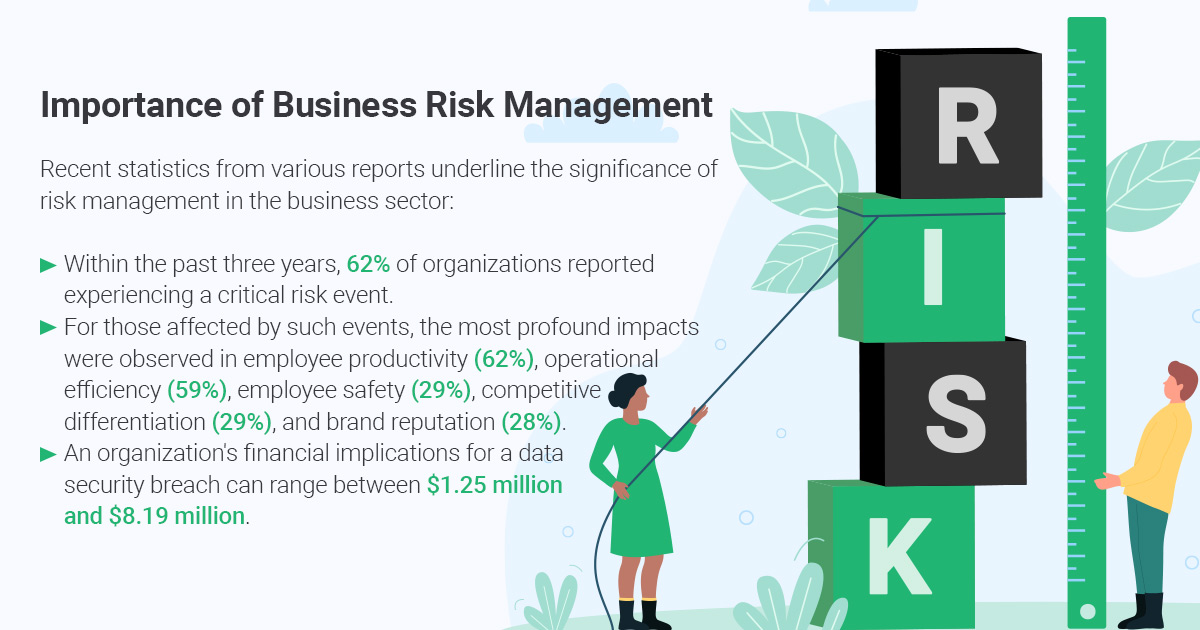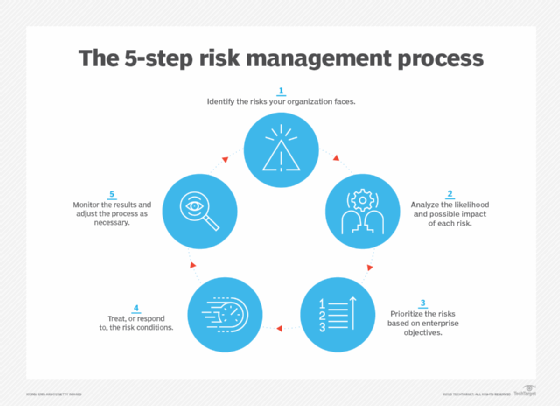Unlocking the Actual Importance of Risk Management for Continuous Growth
Unlocking the Actual Importance of Risk Management for Continuous Growth
Blog Article
The Vital Significance of Risk Management in Getting Organizational Goals
In the swiftly progressing business landscape, the ability to navigate unpredictability has actually come to be a critical. This is where Risk Management action in, giving an organized technique to identifying, examining, and mitigating potential roadblocks to progress. It's greater than just a safety action - it's a calculated device, fostering strength and development. As we discover the crucial role of Risk Management in achieving organizational goals, one can not ask yourself but aid: exactly how does this equate right into real-world success?
Recognizing the Principle of Risk Management in Service

The Indispensable Function of Risk Management in Strategic Planning
Integrating Risk Management into strategic planning acts as a secure for organizations, anchoring their long-lasting strategies with a solid structure of preparedness and resilience. Risk Management provides a structure for preparing for unpredictabilities and developing ideal responses, ensuring the company's survival and success also in the face of adversity. By integrating Risk Management right into tactical planning, companies can change these uncertainties into possibilities for growth and technology.

Techniques for Identifying, Assessing, and Prioritizing Risks
The process starts with Risk identification, using devices such as SWOT analysis, which assists in determining potential risks and possibilities. Next off, Risk analysis is conducted to identify the possible impact and chance of each Risk. Threats are prioritized based on their potential influence this and likelihood, enabling companies to concentrate their resources on high-priority dangers.
Safeguarding Business Workflow Through Effective Risk Management
In business landscape laden with uncertainties, effective Risk Management plays an essential role in guarding business procedures. It acts as a safety shield, reducing the negative impacts of prospective dangers and making certain the smooth functioning of all processes. By recognizing and assessing potential risks, Risk Management enables companies to develop durable contingency strategies. This preventative method aids in maintaining operational stability, also when faced with unanticipated circumstances. Basically, Risk Management is the lifeline that keeps the business procedures afloat amidst unstable wikipedia reference waters. It ensures not just the survival yet the lasting development of an organization, making it an important device in accomplishing business goals. Thus, companies should buy thorough Risk Management techniques to secure their procedures.

Transforming Potential Risks to Opportunities: The Power of Risk Management
A proactive technique to take the chance of Management entails recognizing, examining, and prioritizing threats to create methods that turn them into potential benefits. Hence, by leveraging the power of Risk Management, organizations can not just protect their operations however likewise stimulate growth and achieve their objectives in an unforeseeable business setting.
Instance Studies: Success Stories of Risk Management Driving Organization Objectives
Effective execution of Risk Management strategies has yielded excellent lead to various organizations, underscoring the values of this strategy. Multinational firms like Microsoft and Google, for example, have actually leveraged Risk Management to lessen dangers and exploit chances, driving their organization goals onward. Microsoft's aggressive Risk Management method aided it pivot quickly during the 2020 pandemic, transitioning to remote work efficiently, thus preserving productivity. Google, by examining and minimizing prospective dangers in its cloud-based solutions, has actually made sure undisturbed solution, thus strengthening consumer depend on. These instances highlight just how effective Risk Management can not only guide organizations free from prospective challenges but likewise guide them towards their critical objectives. Therefore, Risk Management is essential to the pursuit visit this site right here of organizational goals.
Verdict
To conclude, Risk Management is fundamentally essential in accomplishing organizational goals. It offers a methodical strategy to recognizing, examining, and addressing possible threats and opportunities. Greater than simply mitigating threats, it additionally fosters technology, resilience, and lasting development. By including Risk Management right into tactical preparation, companies can much better navigate uncertainties, guard procedures, and capitalise on opportunities, thereby lining up with long-lasting goals.
At its core, Risk Management is the process of identifying, evaluating, and attending to potential threats that can adversely impact an organization's purposes or procedures. Next off, Risk analysis is conducted to determine the prospective influence and likelihood of each Risk. Risks are prioritized based on their prospective effect and possibility, permitting companies to focus their sources on high-priority dangers. By identifying and analyzing possible threats, Risk Management allows companies to establish durable contingency strategies. An aggressive technique to take the chance of Management includes determining, evaluating, and focusing on dangers to design methods that turn them into prospective benefits.
Report this page